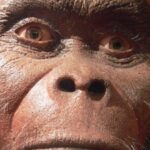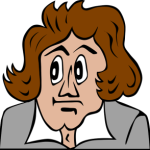May 16, 2011
How Did Homo erectus Differ as a Species 800,000 ya?
Once Homo erectus left Africa and began his journey to the disparate biomes and habitats of the planet, he evolved from the phenotype that populated Africa 1.8 mya. His behavior adapted to new climates and that begat variations in tool use, food consumed and cultural norms. His group size, home base characteristics, survival techniques started to vary across the planet.
More than that, Homo erectus‘ (variously called Homo erectus, Homo ergaster and Homo antecessor depending upon where they lived) physical characteristics evolved to suit the environ, be it what we consider ancient China, Java, Dmanisi Georgia, Israel or Gran Dolina Spain. I’m sure man’s genotype remained within what would be considered Homo erectus, but culturally and physically, the bands differed greatly.
Let me take a step back for a moment. There is a difference of opinion as to when mankind’s ‘culture’ began. I spent quite a bit of time researching the definition of ‘culture’ as well as its roots without finding a definitive answer. Therefore, I’ll call the lifestyle elements that are based on environmental conditions like geology, geography, climate, ecosystems ‘culture’. From reading the research of the experts, I’ve come to believe our forebears developed ‘culture’ the moment they used their powers of reasoning to adapt their actions to their surroundings.
Why do I care about all this? Primarily, I am curious about my ancestors. Homo erectus is the first species of the genus Homo to portray the wanderlust so important to modern man’s occupation of every corner of the planet. Nothing seemed to stop him. He adapted, invented and survived. This is eerily familiar to modern man.
To better understand how these long-gone individuals lived their lives, I set out to tell their story a decade ago. What were their daily activities? How did Homo erectus survive the unforgiving hand of nature? What led to inventions like fire, clothing and Acheulian tool making (the latter arrived hundreds of thousands of years apart depending upon whether erectus lived in China or Israel. Why?) To make sense of these questions, I invented characters and dropped them into settings with crises I reasoned they likely would have faced in their world. This gave me the required elements of a paleo-historic novel.
I started with Homo habilis in a novel called Born in a Treacherous Time. 1.8 mya was truly a daunting time to be alive when you were small, clawless, furless, with thin skin and weak teeth. Homo habilis survived just long enough to spawn the next iteration of man, Homo erectus, a thick-skulled, taller and fleeter species, one more suited to battle nature. He did so well in fact, he is one of the longest living Homo species.
In my saga, Homo erectus’ story is called Evolution: A Biography. It tells the story of a band of erectus who is forced out of Africa by events beyond their control. In their quest for a new homeland, they meet up with other Homo erectus (and ergaster and antecessor) bands from South Africa, China, Java, Georgia, Israel and Spain (the prominent Homo erectus sites 800k ya). The drama of the story is as much the differences in their lifestyle as the treachery they find on the journey. I’ve spent quite a bit of time researching the variances between the bands in areas such as:
- physical size and body characteristics
- brain size
- face, teeth
- intelligence
- tool use
- food
- learning ability
- language (or ability) and body language
- their childhood and adolescence
- daily chores
- culture
- survival instincts
- aggressiveness
- hunting, scavenging, and gathering
- why they might have left their homelands (each habitat had reasons that might have driven them away, or it could be wanderlust)
- characteristics of their environ–plants, animals, major occurrences during that time frame
I’ve created a chart. It’s a bit difficult to understand, but if you’re so inclined, I’d enjoy your input on the variations in these groups.
[scribd id=54403358 key=key-rdg6ij13zumpnzwlfr6 mode=list]






